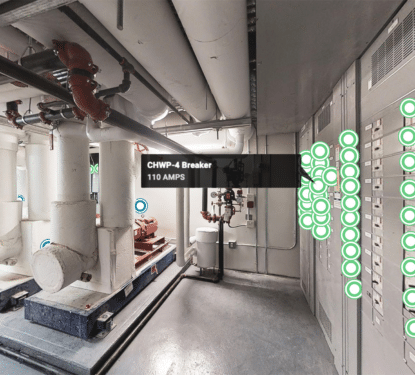There is an almost perfect case for interfacing Smart Buildings with Smart Grid because all the stakeholders win. It will require minimum technical and commercial risk and decades of latent potential business is stacked up waiting to be converted. The driver for this business is, Negawatts, through reducing consumption at the consumer end and reducing production at the central power source through Distributed Energy, a cost-effective solution to meet the needs of a low carbon economy in the 21st century is achieved. Intertwined with this is the function of demand control and cost benefit it can deliver.
Our report, The Smart Building To Smart Grid Interface Business provides a detailed assessment of this growing business over the next 20 years. It looks at the potential size of this market and sets out all the important factors that will shape the business in the next 5 years in the developed countries of the world, as well as breaking this down by product category and vertical building markets.
Smart Building to Smart Grid: A Business Primed & Ready to Take Off
We estimate that this market will be worth some $3.05 billion over the next five years and will peak at approximately $2.2 billion in 2020. This is based on what we term the priority market and this includes the software and its installation for high energy intensive buildings that generate their own power. We have only included in these figures a small percentage of large high energy intensive buildings that do not generate distributed electricity but will install demand control functions.
This represents no more than 2% of the total population of buildings in the world and therefore our estimates of the market demand represent the lowest case scenario. However in time we expect that for new Smart buildings an advanced BEMS would be installed that would have all the functionalities in it and would be directly linked to the Smart Grid ADR. This would reduce the total cost of the interface software but demand would increase. These figures do not include the Building Energy Management (BEM) control and its central supervisory software, which are detailed separately.
Whilst these figures are substantial they represent only 1% of the total investment needed to deliver a fully operational Smart Grid and the return on the investment in the short term looks much more attractive. More important is the fact that private money will be available for around 70% of the investment.
The Major Smart Grid & Building Controls Suppliers Will Dominate This Business
We have identified some 40 companies, that offer software and systems to control and manage energy consumption and energy generation equipment in Smart Buildings and interface with load control and automatic demand response on the Smart Grid. However we predict that the 4 companies – Honeywell, Johnson Controls, Schneider Electric and Siemens who already take some 80% of the world’s product market for BEMS, will also eventually dominate the interface market. Not only do they dominated the market but now they have built up a vast heritage estate that they have a strong grip on. With at least 65% of the business going to the retrofit market they know where to select and find the interface business.
But selling and installing interface products is “small time” for these companies. In addition they have well established EMSCO service businesses particularly in the developed markets of North America and Europe and they are in a position to use their interface capability to leverage much more attractive business. They are now in a position to bring together Total Energy Management solutions not just on single sites but multiple sites across regions and whole countries. These contracts have been in place for some years and now through virtual power plant technology they can provide the opportunity to aggregate their supply and control hundreds of megawatts of electrical power.
This provides the scale that major Electrical Utilities want for a cleaner source of distributed electrical power generation to meet their CO2 reduction targets, whilst reducing the investment that they would need to make in new generating facilities. Through interfacing Smart Buildings with Smart Grid you get a fine tuned system that automatically receives the data from the Smart Building control systems and balances supply and demand in real time. Also through aggregating electrical production and consumption by joining together a large number of plants you get scale and efficiency.
We show in this report, how through strategic acquisitions, these companies as well as ABB and GE, have over the last 2 years been acquiring expertise in software analytics and companies that buy and sell energy and further extending their EMSCO business across the world.
The interface technology is in place and both Smart Grid and Smart Buildings benefit from the integration. It does not require fast sums of money to bring it about and the likely slowing down of the development of Smart Grid because of the present poor economic conditions and lack of finance will push more investment in the direction of this ‘easy win’.



